Search Result
Results for "
pain models
" in MedChemExpress (MCE) Product Catalog:
| Cat. No. |
Product Name |
Target |
Research Areas |
Chemical Structure |
-
- HY-106199
-
|
|
Adenosine Receptor
|
Neurological Disease
Inflammation/Immunology
|
|
Adenosine A1 receptor activator T62 is an allosteric enhancer of adenosine A1 receptor. Adenosine A1 receptor activator T62 produces antinociception in animal models of acute pain and also reduces hypersensitivity in models of inflammatory and nerve-injury pain .
|
-
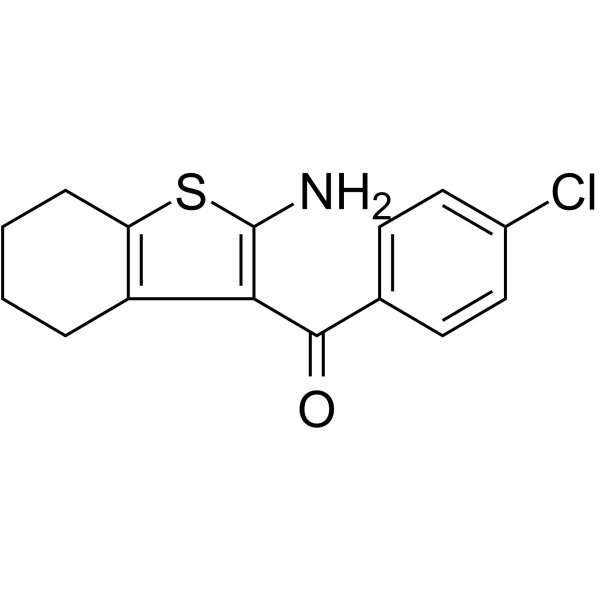
-
- HY-P5900
-
|
m3-HwTx-IV
|
Sodium Channel
|
Neurological Disease
|
|
m3-Huwentoxin IV (m3-HwTx-IV) is a potent NaV inhibitor with IC50s of 3.3, 6.8, 7.2, 8.4, 11.9 and 369 nM against hNaV1.7, hNaV1.6, hNaV1.3, hNaV1.1, hNaV1.2 and hNaV1.4, respectively in QPatch assay. m3-Huwentoxin IV dose-dependently suppresses spontaneous pain induced by the NaV1.7 activator OD1 in a rodent pain model .
|
-
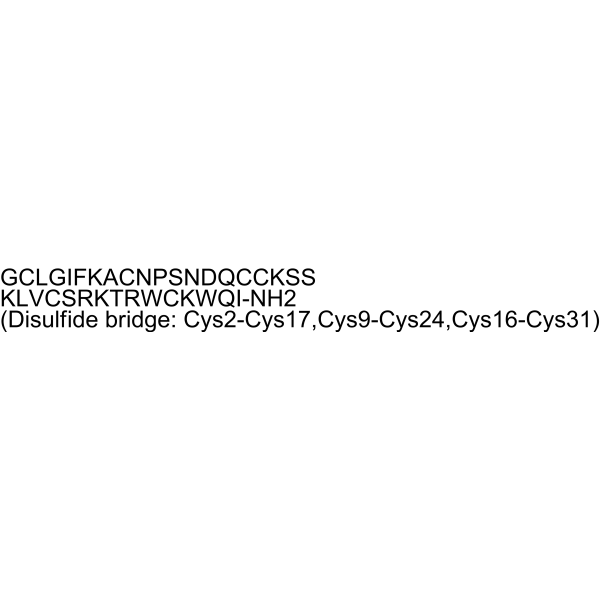
-
- HY-163065
-
|
|
Opioid Receptor
Sigma Receptor
|
Neurological Disease
|
|
σ1 Receptor/μ Opioid receptor modulator 2 (compound 4x) is a dual μOR agonist/σ1R antagonist, and displays picomolar μOR agonism activity (EC50: 0.6 ± 0.2 nM) and good σ1R inhibitory activity (Ki: 363.7 ± 5.6 nM). σ1 Receptor/μ Opioid receptor modulator 2 exhibits robust analgesic effects in various pain models .
|
-
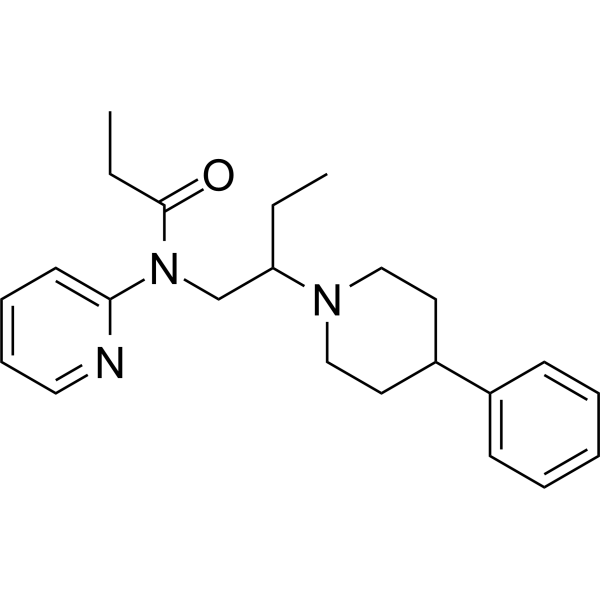
-
- HY-107561
-
|
|
Others
|
Inflammation/Immunology
|
|
A-943931 (Compound 10) is a histamine H4 receptor antagonists. A-943931 has improved pharmacotropic and in vivo efficacy in models of pain and inflammation. A-943931 can be used in vivo anti-inflammatory and anti-nociception research .
|
-
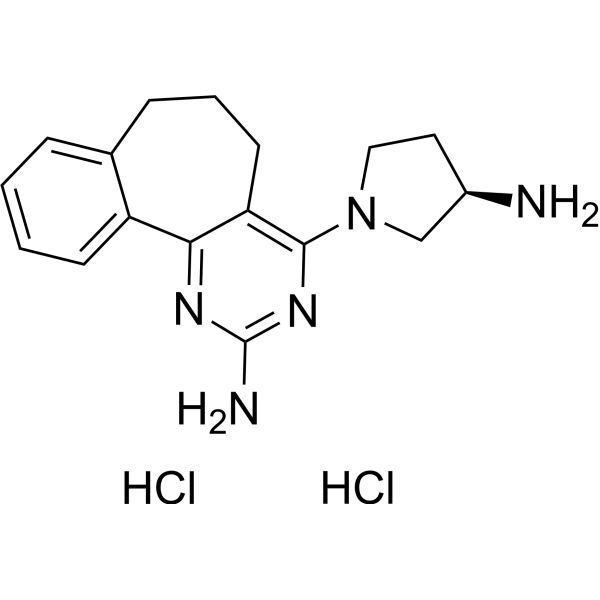
-
- HY-155417
-
|
|
Others
|
Neurological Disease
|
|
GPR34 receptor antagonist 3 (Compound 5e) is a class of GRP34 antagonists, IC50 is 0.680 μM. GPR34 receptor antagonist 3 inhibited ERK1/2 phosphorylation induced by lysophosphatidylserine in a dose-dependent way without obvious cytotoxicity. GPR34 receptor antagonist 3 shows antisensory activity in mouse neuropathic pain model .
|
-
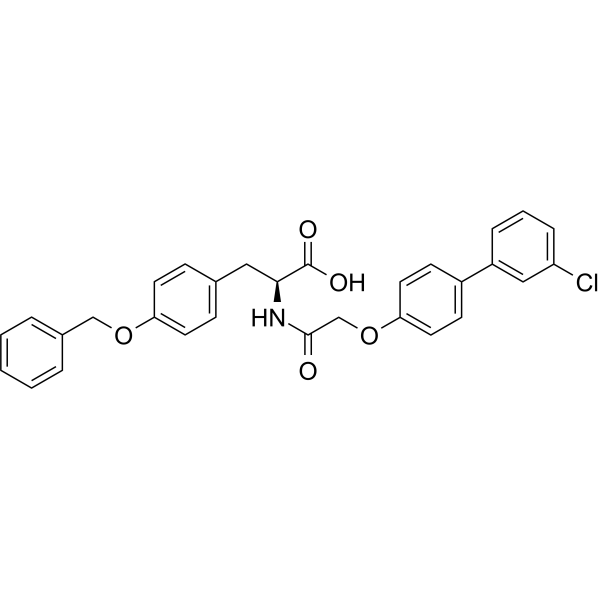
-
- HY-111029
-
|
|
GlyT
|
Neurological Disease
|
|
ALX-1393, a selective GlyT2 inhibitor, has an antinociceptive effect on thermal, mechanical, and chemical stimulations in a rat acute pain model .
|
-
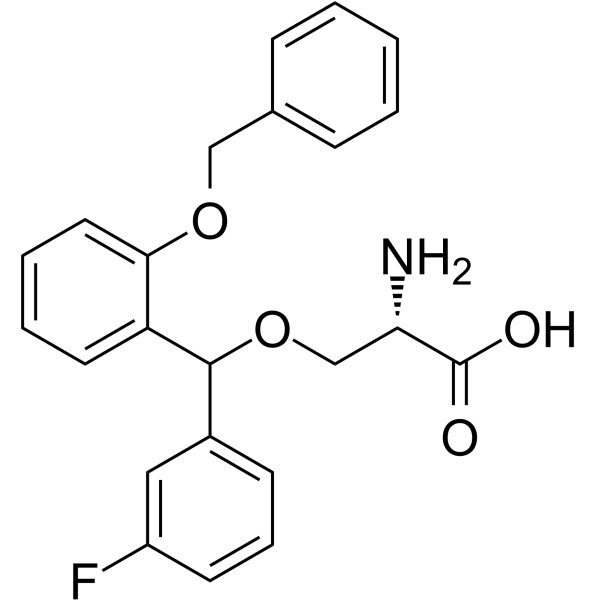
-
- HY-113608
-
|
|
Adenosine Receptor
|
Neurological Disease
|
|
VCP171 is a potent adenosine A1 receptor (A1R) positive allosteric modulator (PAM). VCP171 is effective at decreasing excitatory synaptic currents in Lamina II of neuropathic pain model. VCP171 can be used for researching neuropathic pain .
|
-
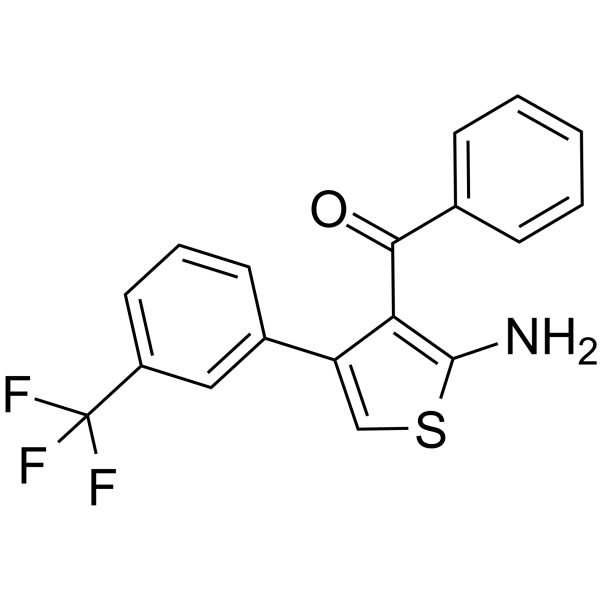
-
- HY-N3710
-
|
Kumujian G; O-Methylpicrasidine I
|
JAK
Apoptosis
|
Neurological Disease
Cancer
|
Dehydrocrenatidine, a natural alkaloid, is a specific JAK inhibitor. Dehydrocrenatidine inhibits voltage-gated sodium channels and ameliorates mechanic allodia in a rat model of neuropathic pain .
|
-
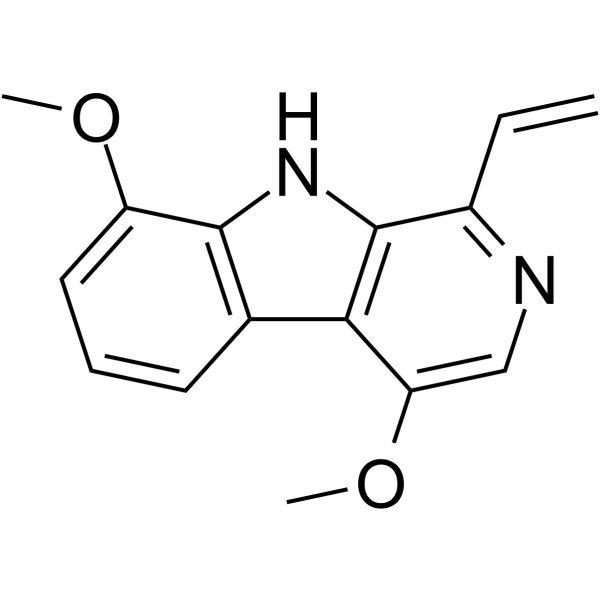
-
- HY-111029A
-
|
|
GlyT
|
Others
|
|
ALX-1393 TFA, a selective GlyT2 inhibitor, has an antinociceptive effect on thermal, mechanical, and chemical stimulations in a rat acute pain model .
|
-

-
- HY-N2258
-
|
|
|
|
|
Poncirin is isolated from Poncirus trifoliata with anti-inflammory activites. Poncirin significantly reduces mechanical hyperalgesia and allodynia in Complete Freund’s Adjuvant (CFA)-induced inflammatory pain models .
|
-

-
- HY-118952
-
|
|
Sodium Channel
|
Neurological Disease
|
|
PF-06456384 is a highly potent and selective NaV1.7 inhibitor with an IC50 of 0.01 nM. PF-06456384 has the potential for formalin pain model research .
|
-

-
- HY-118952A
-
|
|
Sodium Channel
|
Neurological Disease
|
|
PF-06456384 trihydrochloride is a highly potent and selective NaV1.7 inhibitor with an IC50 of 0.01 nM. PF-06456384 trihydrochloride has the potential for formalin pain model research .
|
-
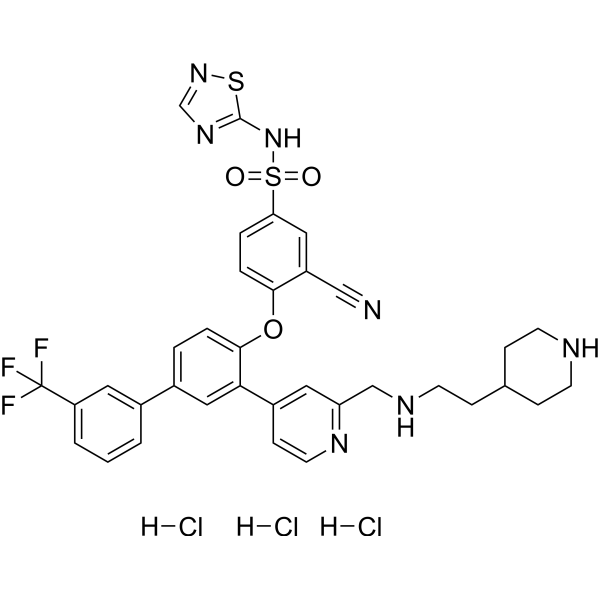
-
- HY-111258
-
-

-
- HY-N5025
-
|
|
P2X Receptor
Apoptosis
|
Inflammation/Immunology
Cancer
|
|
Bullatine A, a diterpenoid alkaloid of the genus Aconitum, possesses anti-rheumatic, anti-inflammatory and anti-nociceptive effects. Bullatine A is a potent P2X7 antagonist, inhibits ATP-induced cell death/apoptosis and P2X receptor-mediated inflammatory responses . Bullatine A attenuates pain hypersensitivity, regardless of the pain models employed .
|
-
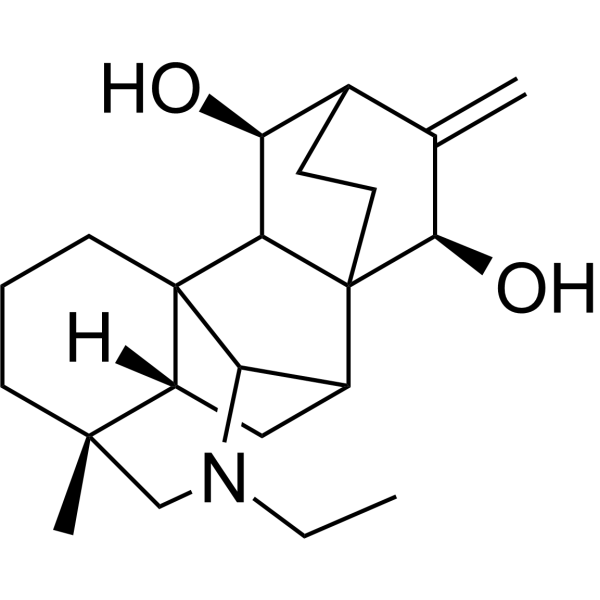
-
- HY-10635
-
|
|
TRP Channel
|
Inflammation/Immunology
Cancer
|
|
ABT-102 is a potent and highly selective Vanilloid Receptor (TRPV1) receptor antagonist. ABT-102 potently and reversibly increases heat pain thresholds and reduced painfulness of suprathreshold oral/cutaneous heat. ABT-102 reduces nociceptive responses of animals in models of inflammatory, bone cancer, postoperative, and osteoarthritic pain .
|
-
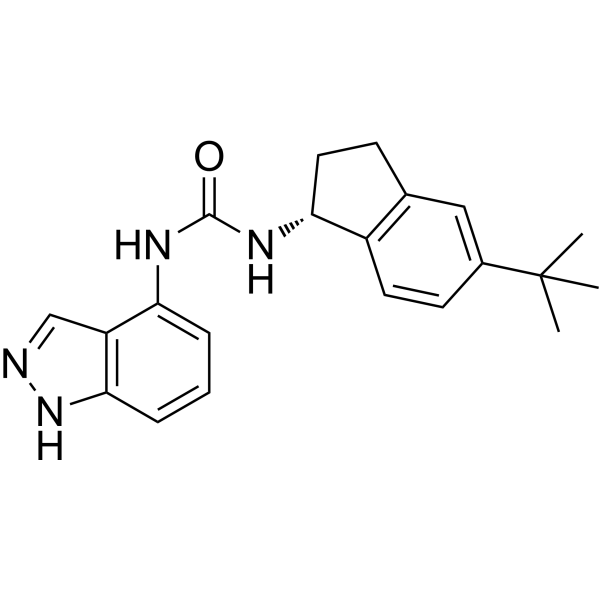
-
- HY-119033
-
|
|
MAGL
|
Inflammation/Immunology
|
|
MGL-IN-1 is a potent and selective irreversible MGL (β-lactam-based monoacylglycerol lipase) inhibitor. MGL-IN-1 alleviates symptoms in a MS model in vivo and exhibits analgesic effects in an acute inflammatory pain model in vivo. MGL-IN-1 displays high membrane permeability and brain penetrant .
|
-
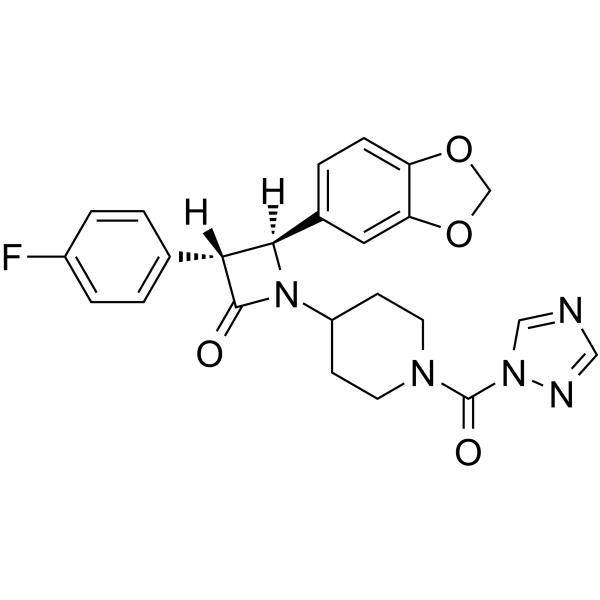
-
- HY-P5802
-
|
|
Calcium Channel
|
Neurological Disease
|
|
ω-Conotoxin FVIA is an N-type Ca 2+channel (Ca v 2.2)
inhibitor. ω-Conotoxin FVIA reduces mechanical and thermal pain abnormalities
in a rat model of caudal nerve injury. ω-Conotoxin FVIA can be used in the
study of highly effective pain relievers with low side effects
.
|
-

-
- HY-150270
-
|
|
P2X Receptor
|
Neurological Disease
Inflammation/Immunology
|
|
NP-1815-PX is a potent and selective P2X4R antagonist. NP-1815-PX has anti-inflammatory activity, and can relieve pain in chronic pain models. NP-1815-PX also inhibits guinea pig tracheal/bronchial smooth muscle (TSM and BSM) contractions .
|
-

-
- HY-150270A
-
|
|
P2X Receptor
|
Neurological Disease
Inflammation/Immunology
|
|
NP-1815-PX sodium is a potent and selective P2X4R antagonist. NP-1815-PX sodium has anti-inflammatory activity, and can relieve pain in chronic pain models. NP-1815-PX sodium also inhibits guinea pig tracheal/bronchial smooth muscle (TSM and BSM) contractions .
|
-

-
- HY-P5874
-
|
|
Calcium Channel
|
Inflammation/Immunology
|
|
Myr-TAT-CBD3 is CRMP2-CaV2.2 interaction inhibitor. Myr-tat-CBD3 can significantly attenuate carrageenan-induced thermal hypersensitivity and reverse thermal hypersensitivity induced in a rat model of postoperative pain. Myr-TAT-CBD3 can be used to study inflammation and postoperative pain .
|
-

-
- HY-P1330
-
|
|
P2X Receptor
|
Inflammation/Immunology
|
|
Purotoxin 1 is a P2X3 receptor inhibitor. Purotoxin 1 shows antinociceptive properties in animal models of inflammatory pain. Purotoxin 1 can be isolated from the venom of the wolf spider Geolycosa sp .
|
-
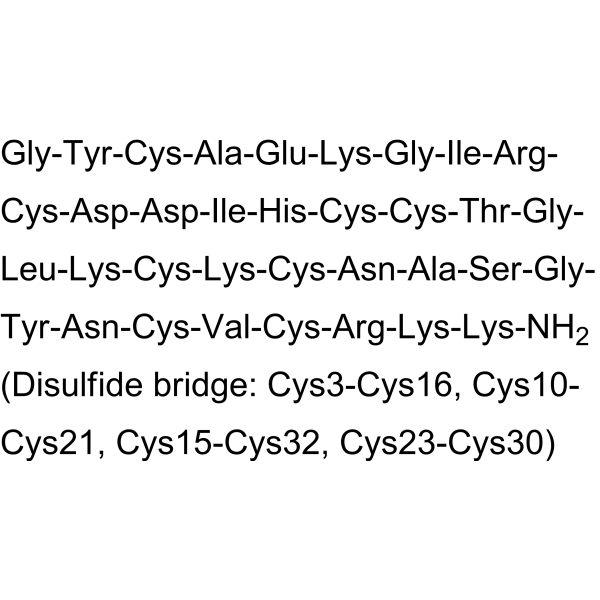
-
- HY-15451
-
MDA 19
1 Publications Verification
|
Cannabinoid Receptor
|
Neurological Disease
|
|
MDA 19 is a potent and selective agonist of human cannabinoid receptor 2 (CB2), with a Ki of 43.3 nM. MDA 19 has antiallodynic effects in a rat model of neuropathic pain and does not affect rat locomotor activity .
|
-

-
- HY-P5848
-
|
|
nAChR
|
Neurological Disease
|
|
αO-Conotoxin GeXIVA is a potent α9α10 nAChR antagonist with an IC50 of 12 nM against rat α9α10. αO-Conotoxin GeXIVA shows analgesic in animal models of pain .
|
-
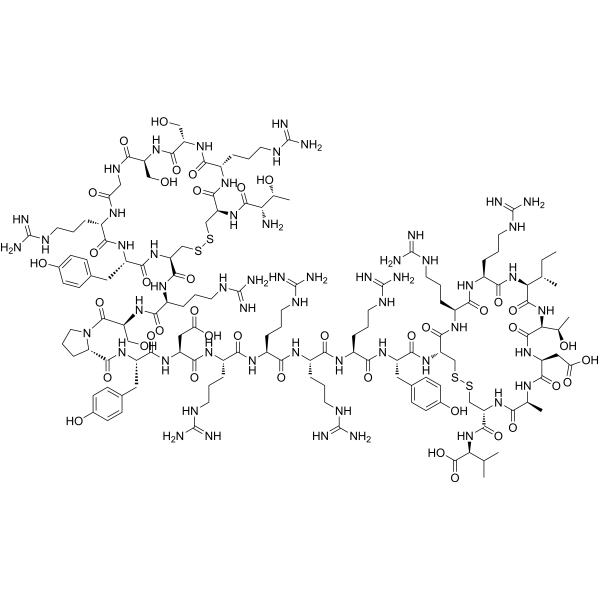
-
- HY-149855
-
|
|
Sigma Receptor
|
Others
|
|
AB10 is a selective S1R antagonist. AB10 with Ki of 10, 165 nM for S1R and S2R, respectively. AB10 reverses the effect of Capsaicin (HY-10448) caused pain in model .
|
-

-
- HY-P5907
-
|
|
Opioid Receptor
|
Neurological Disease
|
|
Helianorphin-19 is a potent and selective κ-opioid receptor (KOR) activator with a Ki of 21 nM and an EC50 of 45 nM. Helianorphin-19 exhibits strong KOR-specific peripheral analgesic activity in a mouse model of chronic visceral pain .
|
-

-
- HY-131004
-
|
|
Cannabinoid Receptor
|
Neurological Disease
|
|
CB2R PAM is an orally active cannabinoid type-2 receptors (CB2Rs) positive allosteric modulator. CB2R PAM displays antinociceptive activity in vivo in an experimental mouse model of neuropathic pain .
|
-
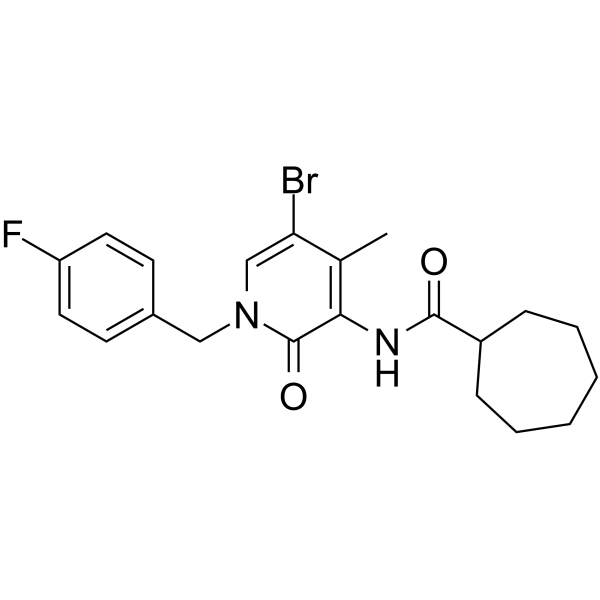
-
- HY-14886
-
|
MEN16132 free base
|
Bradykinin Receptor
|
Cardiovascular Disease
Neurological Disease
|
|
Fasitibant chloride (MEN16132 free base) is a potent and selective nonpeptide bradykinin B2 receptor (B2R) antagonist. Fasitibant chloride reduces joint pain and diminishes joint oedema in Carrageenan-induced arthritis rat model .
|
-
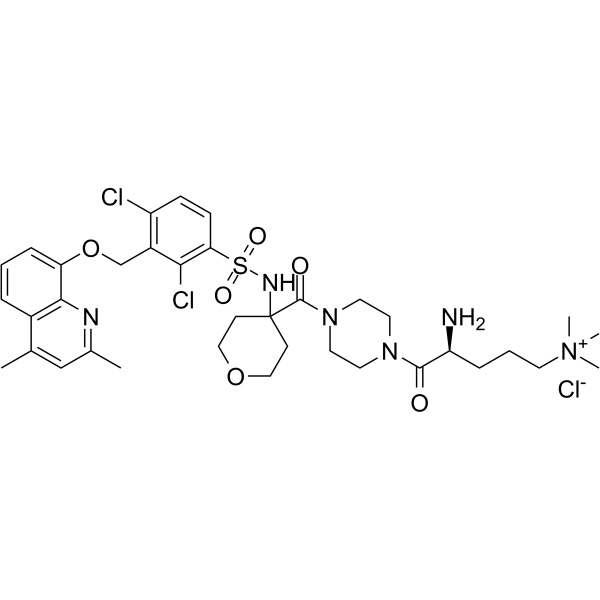
-
- HY-110036A
-
|
L768242 hydrochloride
|
Cannabinoid Receptor
|
Neurological Disease
|
|
GW405833 hydrochloride is a potent and selective cannabinoid-2 (CB2) receptor agonist (EC50 = 0.65 nM; maximum inhibition = 44.6%). GW405833 hydrochloride produces potent antihyperalgesic effects in several rodent models of pain .
|
-

-
- HY-103344
-
|
|
Aminopeptidase
mGluR
|
Neurological Disease
Inflammation/Immunology
|
|
ZJ43 is a potent NAAG peptidase inhibitor, with an IC50 of 2.4 nM and a Ki of 0.8 nM. ZJ43 sufficiently activates group II mGluR and reduces some of the behavioral effects of PCP. ZJ43 shows an analgesic effect in neuropathic and inflammatory and pain models .
|
-
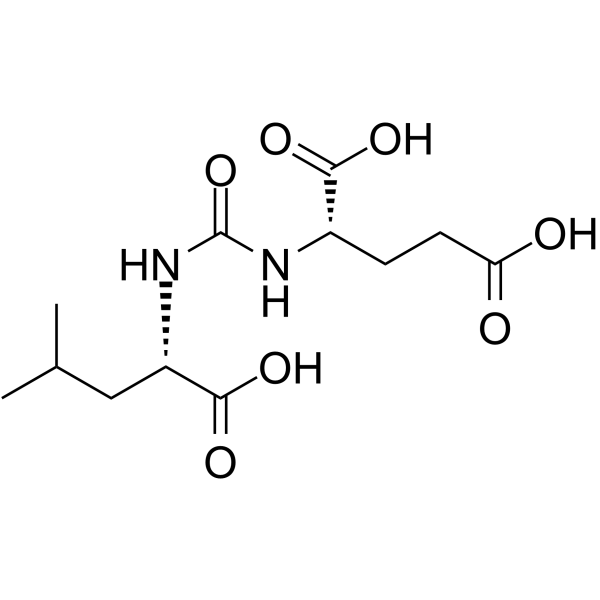
-
- HY-142700
-
|
|
Somatostatin Receptor
|
Neurological Disease
|
|
SSTR4 agonist 3 is a potent agonist of SSTR4. SSTR4 is expressed at relatively high levels in the hippocampus and neocortex, memory and learning regions, and Alzheimer's disease pathology. SSTR4 agonists are potent in rodent models of pain associated with acute and chronic associated anti-peripheral nociceptive and anti-inflammatory activity. SSTR4 agonist 3 has the potential for the research of pain (extracted from patent WO2021233427A1, compound 14) .
|
-

-
- HY-142701
-
|
|
Somatostatin Receptor
|
Neurological Disease
|
|
SSTR4 agonist 4 is a potent agonist of SSTR4. SSTR4 is expressed at relatively high levels in the hippocampus and neocortex, memory and learning regions, and Alzheimer's disease pathology. SSTR4 agonists are potent in rodent models of pain associated with acute and chronic associated anti-peripheral nociceptive and anti-inflammatory activity. SSTR4 agonist 4 has the potential for the research of pain (extracted from patent WO2021233428A1, compound 14) .
|
-

-
- HY-133130
-
|
|
MAGL
|
Neurological Disease
|
|
JNJ-42226314 is a competitive, highly selective and reversible non-covalent monoacylglycerol lipase (MAGL) inhibitor. JNJ-42226314 demonstrates dose-dependent enhancement of the major endocannabinoid 2-arachidonoylglycerol (2-AG) as well as efficacy in models of neuropathic and inflammatory pain .
|
-
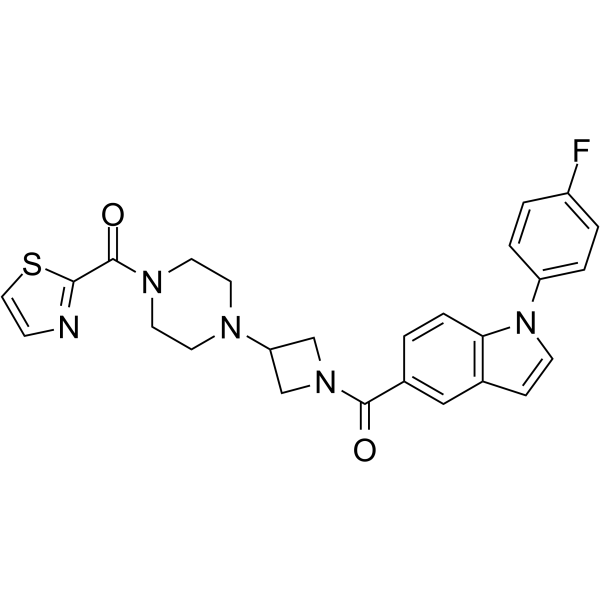
-
- HY-P1091
-
|
|
Cannabinoid Receptor
|
Neurological Disease
|
|
Hemopressin is a nonapeptide derived from the α1-chain of hemoglobin, is originally isolated from rat brain homogenates. Hemopressin is orally active, selective and inverse agonist of CB1 cannabinoid receptors. Hemopressin exerts antinociceptive action in inflammatory pain models .
|
-

-
- HY-143880
-
|
|
Mas-related G-protein-coupled Receptor (MRGPR)
|
Neurological Disease
|
|
MRGPRX1 agonist 4 (compound 1t) is a potent and orally active Mas-related G protein-coupled receptor X1 (MRGPRX1) positive allosteric modulator with an EC50 value of 0.1 μM. MRGPRX1 agonist 4 has good metabolic stability and oral bioavailability. MRGPRX1 agonist 4 can reduce behavioral heat hypersensitivity in a neuropathic pain model humanized MRGPRX1 mice. MRGPRX1 agonist 4 can be used for researching neuropathic pain .
|
-
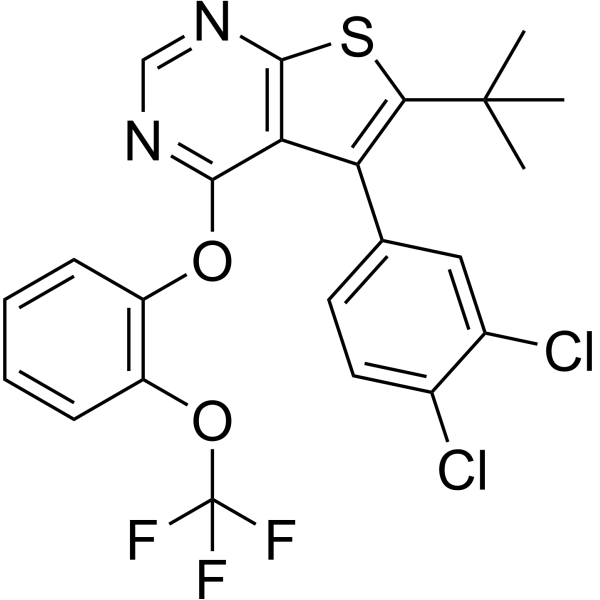
-
- HY-110199
-
|
|
TRP Channel
|
Neurological Disease
|
|
TC-I 2014 (compound 5) is a potent and orally active Benzimidazole-containing transient receptor potential melastatin 8 (TRPM8) antagonist, with IC50 values of 0.8 nM, 3.0 nM and 4.4 nM for canine, human and rat channels respectively. TC-I 2014 exhibits antiallodynic properties in pain models .
|
-
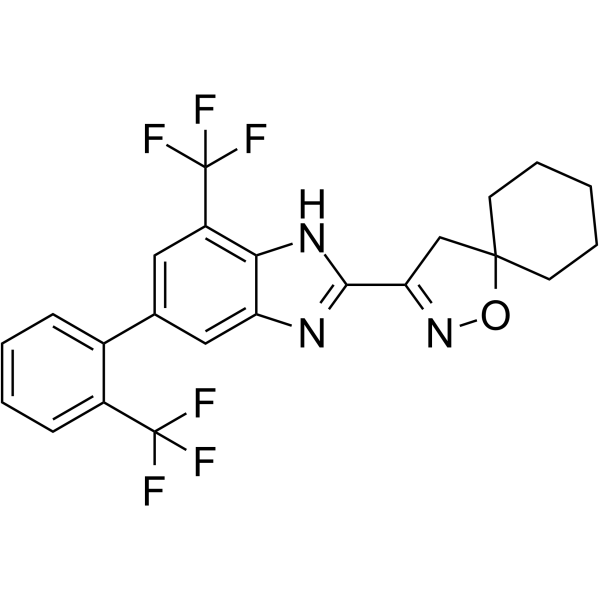
-
- HY-P1090
-
|
|
Cannabinoid Receptor
|
Neurological Disease
|
|
Hemopressin(rat) is a nonapeptide derived from the α1-chain of hemoglobin, is originally isolated from rat brain homogenates. Hemopressin(rat) is orally active, selective and inverse agonist of CB1 cannabinoid receptors. Hemopressin(rat) exerts antinociceptive action in inflammatory pain models .
|
-
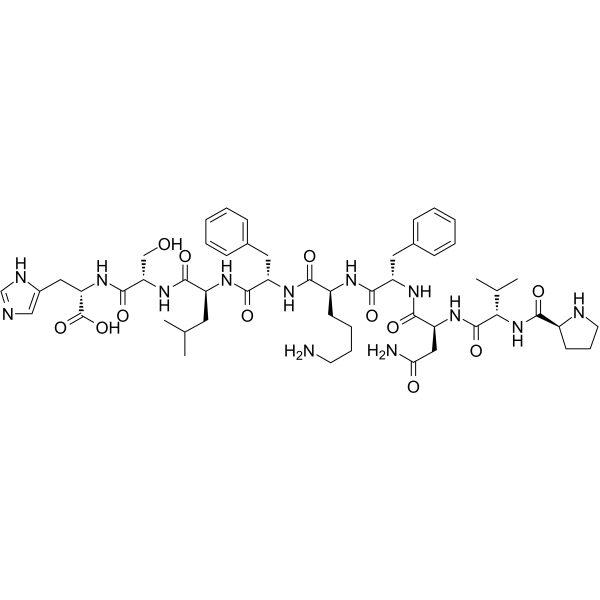
-
- HY-P1091A
-
|
|
Cannabinoid Receptor
|
Neurological Disease
|
|
Hemopressin TFA is a nonapeptide derived from the α1-chain of hemoglobin, is originally isolated from rat brain homogenates. Hemopressin TFA is orally active, selective and inverse agonist of CB1 cannabinoid receptors. Hemopressin TFA exerts antinociceptive action in inflammatory pain models .
|
-

-
- HY-145830
-
|
|
Adenylate Cyclase
|
Neurological Disease
|
|
AC1-IN-1 is a potent and selective Adenylyl cyclase type 1 (AC1) inhibitor with an IC50 of 0.54 µM. AC1-IN-1 displays modest antiallodynic effects in a mouse model of inflammatory pain. AC1-IN-1 has CNS activity .
|
-

-
- HY-P3223
-
|
|
Opioid Receptor
|
Neurological Disease
|
|
Biphalin TFA, a BBB-penetrable opioid peptide analog, contains two active enkephalin pharmacophores. Biphalin TFA has high affinity for opioid receptors. Biphalin TFA shows analgesic effect in acute, neuropathic, and chronic animal pain models. Biphalin TFA is also an antiviral, antiproliferative, anti-inflammatory, and neuroprotective agent .
|
-

-
- HY-P1090A
-
|
|
Cannabinoid Receptor
|
Neurological Disease
|
|
Hemopressin(rat) TFA is a nonapeptide derived from the α1-chain of hemoglobin, is originally isolated from rat brain homogenates. Hemopressin(rat) TFA is orally active, selective and inverse agonist of CB1 cannabinoid receptors. Hemopressin(rat) TFA exerts antinociceptive action in inflammatory pain models .
|
-
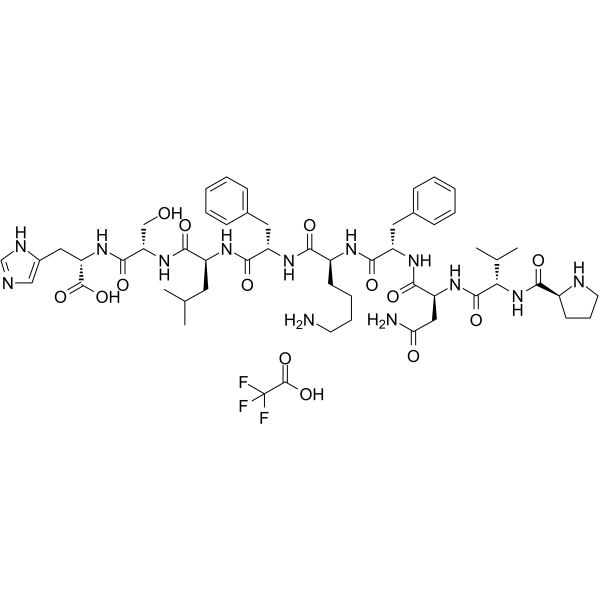
-
- HY-131019
-
|
|
mGluR
|
Neurological Disease
|
|
JF-NP-26, an inactive photocaged derivative of raseglurant, is the first caged mGlu5 receptor negative allosteric modulator. Uncaging of JF-NP-26 is elicited with light pulses in the visible spectrum (405 nm). JF-NP-26 induces light-dependent analgesia in models of inflammatory and neuropathic pain in freely behaving animals .
|
-
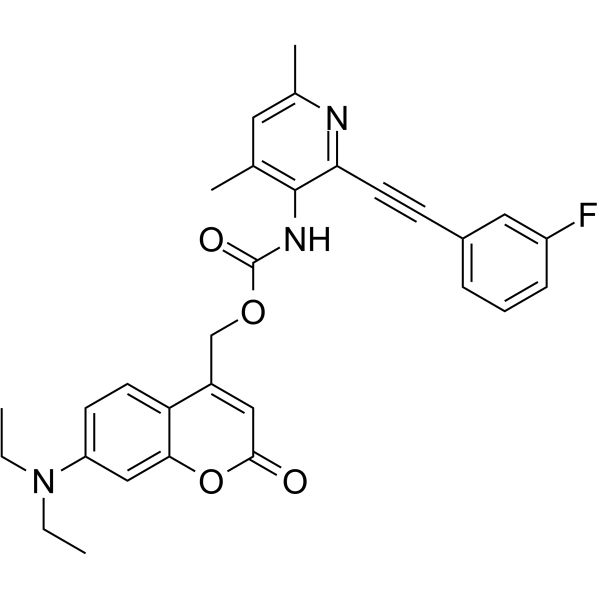
-
- HY-103461
-
|
|
FAAH
|
Neurological Disease
|
|
FAAH-IN-6 (compound 21d) is a potent, orally active and cross the blood-brain barrier fatty acid amide hydrolase (FAAH) inhibitor with IC50s of 0.72, 0.28 nM for hFAAH, rFAAH, respectively. FAAH-IN-6 shows dose-dependent analgesic efficacy in animal models of both neuropathic and inflammatory pain .
|
-
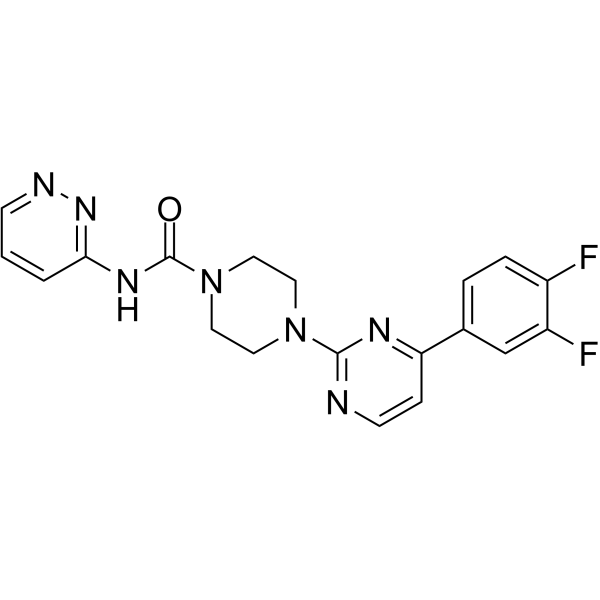
-
- HY-110099
-
|
|
CXCR
|
Inflammation/Immunology
|
|
(±)-NBI-74330 is a potent and selective CXCR3 antagonist. (±)-NBI-74330 not only reduces tactile and thermal hypersensitivity but also enhances the analgesic properties of morphine. (±)-NBI-74330 can reduce microglial cell activation, increase astroglial cell activation, and downregulate the expression of some CXCR3 ligands in a rat neuropathic pain model .
|
-
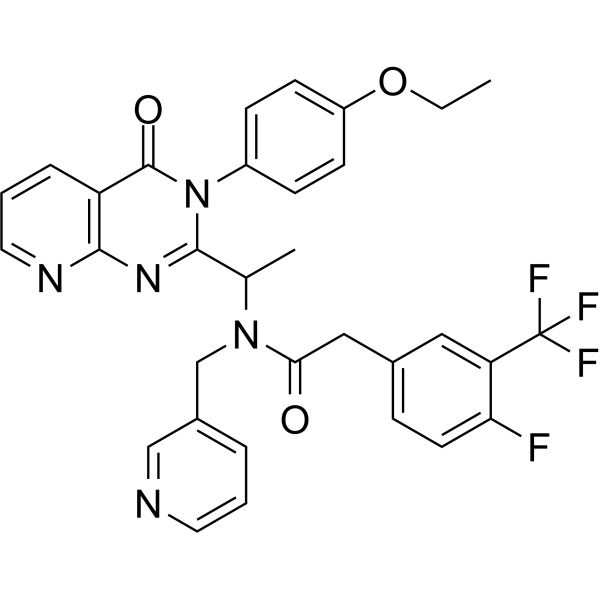
-
- HY-14485
-
|
|
P2X Receptor
|
Neurological Disease
|
|
Ro-51 is a potent and selective dual P2X3/P2X2/3 antagonist, with IC50 of 2 nM and 5 nM for P2X3 and P2X2/3, respectively. Ro-51 can be used for the research for pain .
|
-
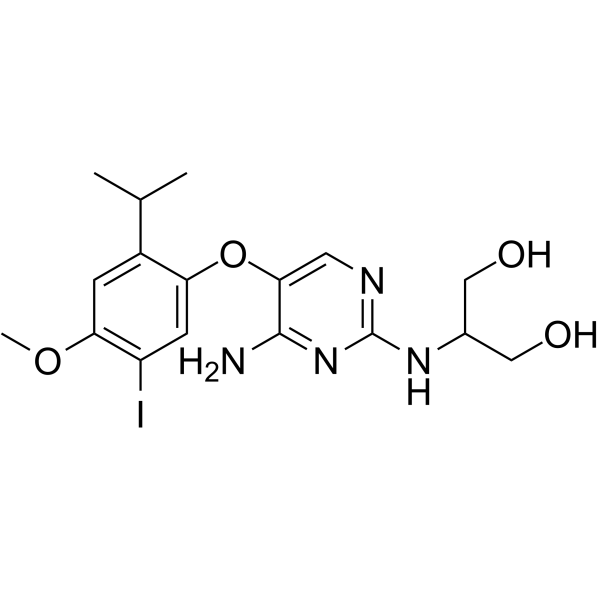
-
- HY-10413
-
MK-2894
1 Publications Verification
|
Prostaglandin Receptor
|
Inflammation/Immunology
Endocrinology
|
|
MK-2894 is a potent, selective, orally active and high affinity (Ki=0.56 nM) full antagonist against E prostanoid receptor 4 (EP4 receptor) (IC50=2.5 nM). MK-2894 possesses potent anti-inflammatory activity in animal models of pain/inflammation and can be used for the research of arthritis .
|
-
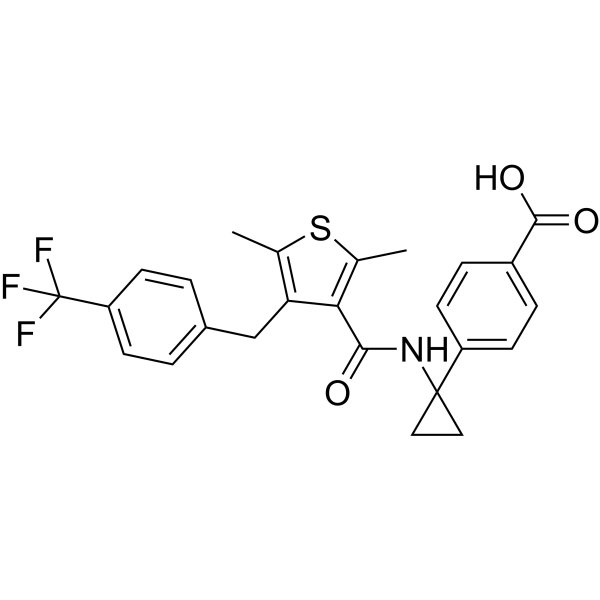
-
- HY-10414
-
|
|
Prostaglandin Receptor
|
Inflammation/Immunology
Endocrinology
|
|
MK-2894 sodium salt is a potent, selective, orally active and high affinity (Ki=0.56 nM) full antagonist against E prostanoid receptor 4 (EP4 receptor) (IC50=2.5 nM). MK-2894 sodium salt possesses potent anti-inflammatory activity in animal models of pain/inflammation and can be used for the research of arthritis .
|
-

-
- HY-N6967
-
|
(-)-α-Bisabolol
|
Apoptosis
|
Neurological Disease
Inflammation/Immunology
|
|
Levomenol ((-)-α-Bisabolol), a monocyclic sesquiterpene alcohol, exerts antioxidant, anti-inflammatory, and anti-apoptotic activities. Levomenol also has neuroprotective effects and prevents neuronal damage and memory deficits through reduction of proinflammatory markers induced by permanent focal cerebral ischemia in mice. Levomenol attenuates nociceptive behaviour and central sensitisation in a rodent model of trigeminal neuropathic pain. Orally active .
|
-

-
- HY-11079
-
|
|
Sodium Channel
|
Neurological Disease
Inflammation/Immunology
|
|
A-803467 is a potent and selective tetrodotoxin-resistant Nav1.8 sodium channel blocker (IC50=8 nM). A-803467 has shown significant anti-nociception in neuropathic and inflammatory pain models. A-803467 enhances the chemosensitivity of conventional anticancer agents through interaction with the ATP-binding cassette subfamily G member 2 (ABCG2) transporter .
|
-

-
- HY-13954
-
|
|
P2X Receptor
|
Neurological Disease
Inflammation/Immunology
|
|
A 839977 is a P2X7 selective antagonist; it blocks BzATP-evoked calcium influx at recombinant human, rat and mouse P2X7 receptors (IC50 values are 20 nM, 42 nM and 150 nM respectively) and reduces inflammatory and neuropathic pain in animal models; the antihyperalgesic effects of P2X7 receptor blockade are mediated by blocking the release of IL-1beta .
|
-

-
- HY-18618
-
|
|
Opioid Receptor
|
Neurological Disease
Inflammation/Immunology
|
|
SB-612111 is a novel and potent opiate receptor-like orphan receptor (ORL-1) antagonist with a high affinity for hORL-1 (Ki=0.33 nM). SB-612111 exhibits selectivity for μ-, κ- and δ-receptors with Ki values of 57.6 nM, 160.5 nM and 2109 nM, respecticely. SB-612111 effectively antagonizes the pronociceptive action of Nociceptin (HY-P0183) in an acute pain model .
|
-
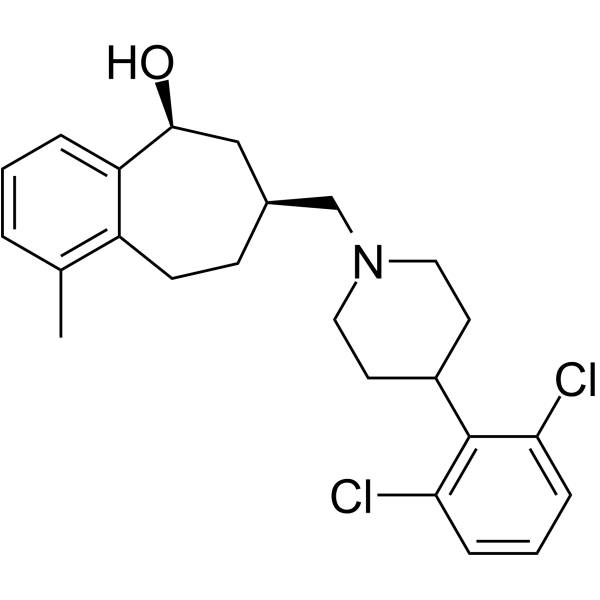
- HY-18618A
-
|
|
Opioid Receptor
|
Neurological Disease
Inflammation/Immunology
|
|
SB-612111 hydrochloride hydrochloride is a novel and potent opiate receptor-like orphan receptor (ORL-1) antagonist with a high affinity for hORL-1 (Ki=0.33 nM). SB-612111 hydrochloride exhibits selectivity for μ-, κ- and δ-receptors with Ki values of 57.6 nM, 160.5 nM and 2109 nM, respecticely. SB-612111 hydrochloride effectively antagonizes the pronociceptive action of Nociceptin (HY-P0183) in an acute pain model .
|
-

- HY-153808
-
|
|
Toll-like Receptor (TLR)
|
Inflammation/Immunology
|
|
Complete Freund's adjuvant (CFA) is an immunoadjuvant emulsified with antigen by its discoverer Jules T. Freund to enhance an animal's immune response to an antigen. Complete Freund's adjuvant (CFA) is also an inducer of the Th1 immune response and a ligand of TLRs. Complete Freund's adjuvant (CFA) contains heat-killed inactive tuberculosis bacilli and consists of a paraffin oil-in-water emulsion. Complete Freund's adjuvant (CFA) stimulates a strong and durable immune response and can be used to induce persistent inflammatory pain models in mice, experimental autoimmune myocarditis (EAM) models, and more. Incomplete Freund's adjuvant (IFA) (HY-153808A) is another type of Freund's Adjuvant that stimulates a weaker immune response .
|
-

- HY-P1220
-
|
|
Sodium Channel
|
Neurological Disease
|
|
Huwentoxin-IV is a potent and selective sodium channel blocker, inhibits neuronal Nav1.7, Nav1.2, Nav1.3 and Nav1.4 with IC50s of 26, 150, 338 and 400 nM, respectively. Huwentoxin-IV preferentially blocks peripheral nerve subtype Nav1.7 by binding neurotoxin receptor site 4. Huwentoxin-IV has analgesic effects on animal models of inflammatory and neuropathic pain .
|
-

- HY-P1220A
-
|
|
Sodium Channel
|
Neurological Disease
|
|
Huwentoxin-IV TFA is a potent and selective sodium channel blocker, inhibits neuronal Nav1.7, Nav1.2, Nav1.3 and Nav1.4 with IC50s of 26, 150, 338 and 400 nM, respectively. Huwentoxin-IV TFA preferentially blocks peripheral nerve subtype Nav1.7 by binding neurotoxin receptor site 4. Huwentoxin-IV TFA has analgesic effects on animal models of inflammatory and neuropathic pain .
|
-

- HY-18617
-
|
|
Opioid Receptor
|
Neurological Disease
Inflammation/Immunology
|
|
rel-SB-612111 hydrochloride is a novel and potent human opiate receptor-like orphan receptor (ORL-1) antagonist with a high affinity for hORL-1 (Ki=0.33 nM). rel-SB-612111 hydrochloride exhibits selectivity for μ-, κ- and δ-receptors with Ki values of 57.6 nM, 160.5 nM and 2109 nM, respecticely. rel-SB-612111 hydrochloride effectively antagonizes the pronociceptive action of Nociceptin (HY-P0183) in an acute pain model .
|
-

- HY-145628
-
|
|
Sigma Receptor
|
Neurological Disease
Inflammation/Immunology
|
|
CM398 is a highly selective, orally active sigma-2 receptor ligand (Ki=0.43 nM), with high sigma-1/sigma-2 selectivity rato (1000-fold). CM398 shows notable affinity for dopamine (Ki=32.90 nM) and serotonin transporters (Ki=244.2 nM). CM398 shows promising anti-inflammatory analgesic effects in the formalin model of inflammatory pain in mice .
|
-
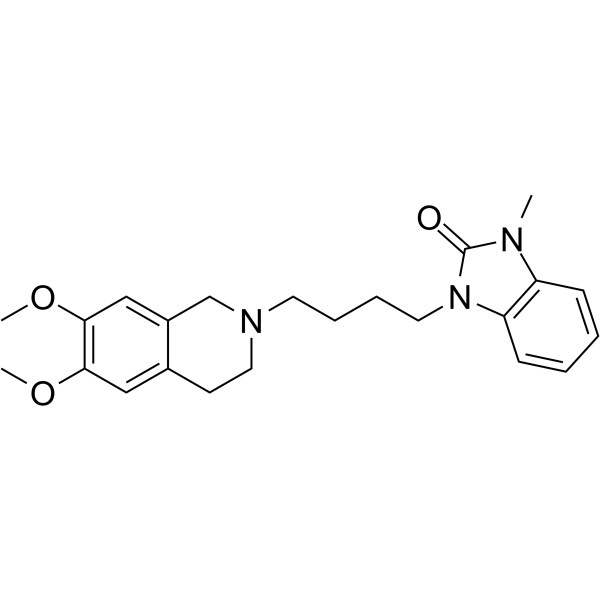
- HY-162347
-
|
|
Sodium Channel
|
Neurological Disease
|
|
Nav1.7-IN-13 (compound 3g) is a sodium channel inhibitor that significantly inhibits Veratridine (HY-N6691)-induced neuronal activity. Nav1.7-IN-13 inhibits total Na+ current in DRG neurons in a concentration-dependent manner; slows down the activation of Navs. Nav1.7-IN-13 significantly alleviated mechanical pain behavior in a rat model of nerve injury (SNI) and had analgesic activity .
|
-
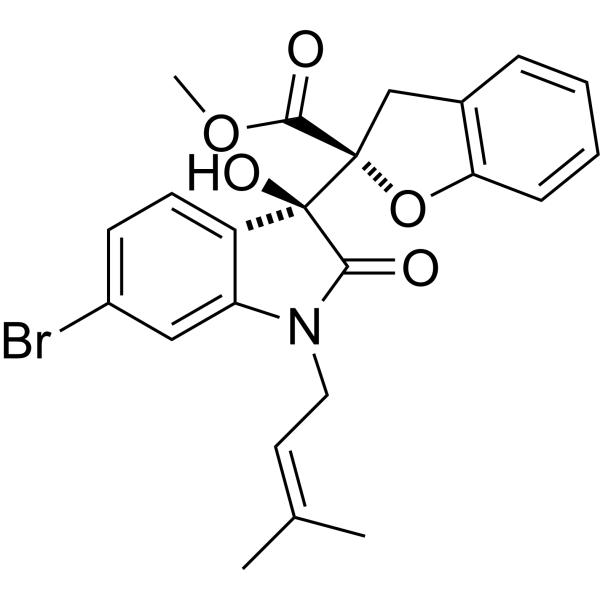
- HY-B1279
-
|
Dipyrone hydrate
|
COX
Apoptosis
|
Inflammation/Immunology
|
|
Metamizole sodium hydrate (Dipyrone) is an orally active cyclooxygenase (COX) inhibitor.. Metamizole sodium hydrate can inhibit cell proliferation and promote cell apoptosis. Metamizole sodium hydrate has anti-inflammatory and antioxidant activities. Metamizole sodium hydrate is an antipyretic, analgesic and spasmolytic agent. Metamizole sodium hydrate can be used in research to relieve a variety of pain .
|
-
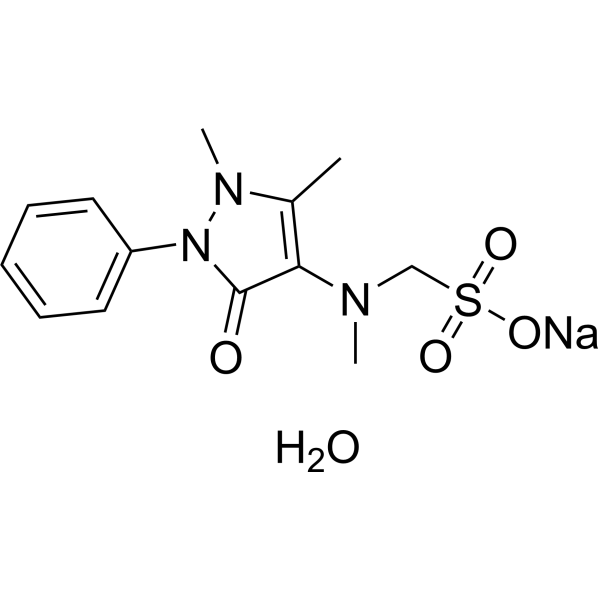
- HY-B1279A
-
|
Dipyrone
|
COX
Apoptosis
|
Inflammation/Immunology
|
|
Metamizole sodium (Dipyrone) is an orally active cyclooxygenase (COX) inhibitor. Metamizole sodium can inhibit cell proliferation and promote cell apoptosis. Metamizole sodium has anti-inflammatory and antioxidant activities. Metamizole sodium is an antipyretic, analgesic and spasmolytic agent. .Metamizole sodium can be used in research to relieve a variety of pain .
|
-
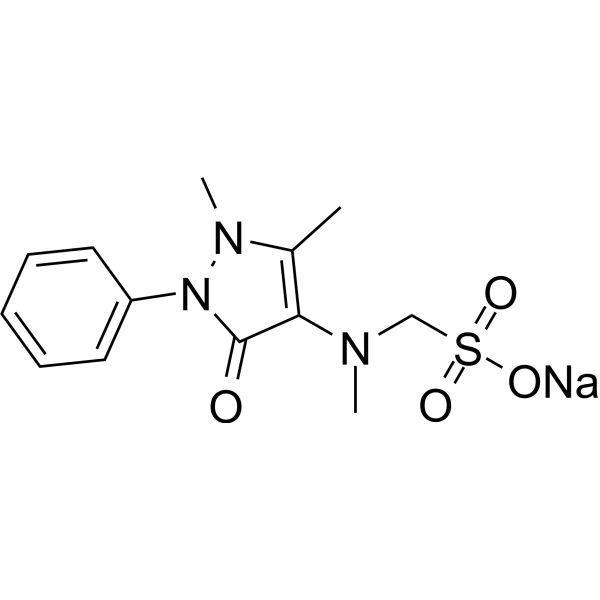
- HY-141547
-
|
|
Sodium Channel
Cytochrome P450
|
Inflammation/Immunology
|
|
Nav1.7-IN-8 is a potent blockage of NaV1.7 with high selectivity for the inhibition of NaV1.7 over the subtypes hNaV1.1 and hNaV1.5. Nav1.7-IN-8 inhibits CYP2C9 and CYP3A4 with an IC50 of 0.17 μM and 0.077 μM, respectively. Nav1.7-IN-8 displays significant analgesic effects in rodent models of acute and inflammatory pain .
|
-
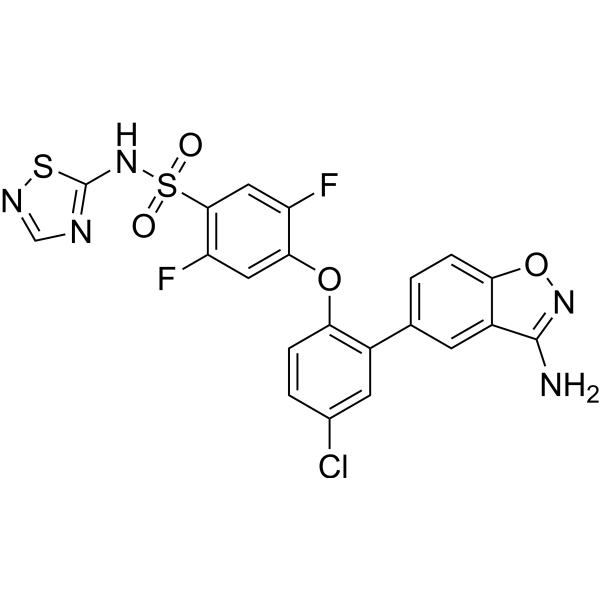
- HY-143264
-
|
|
FAAH
MAGL
|
Neurological Disease
|
|
FAAH/MAGL-IN-2 is a potent, reversible, orally active, and cross the blood-brain barrier FAAH and MAGL inhibitor with IC50s of 11 nM and 36 nM (Kis of 28 nM and 60 nM), respectively . FAAH/MAGL-IN-2 has the potential to research neuropathic pain without causing locomotion impairment .
|
-
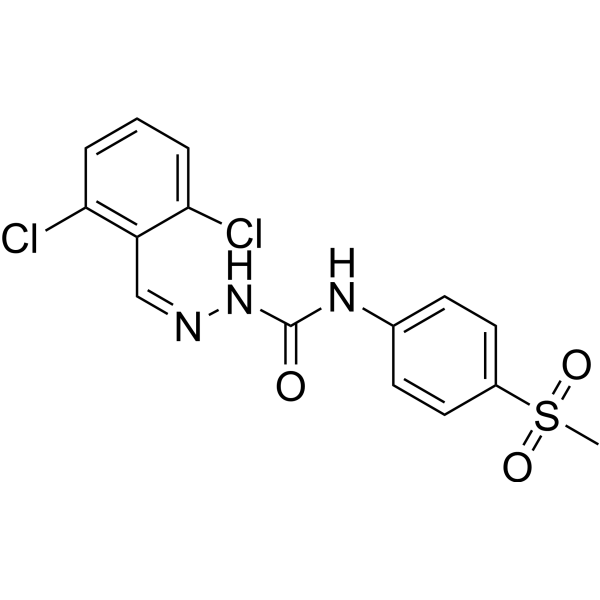
- HY-107405
-
|
|
Sodium Channel
|
Neurological Disease
|
|
TC-N 1752 is a potent and orally active inhibitor of Nav1.7, with IC50s of 0.17 μM, 0.3 μM, 0.4 μM, 1.1 μM and 2.2 μM at hNav1.7, hNav1.3, hNav1.4, hNaV1.5 and rNav1.8, respectively. TC-N 1752 also inhibits tetrodotoxin-sensitive sodium channels. TC-N 1752 shows analgesic efficacy in the Formalin model of pain .
|
-
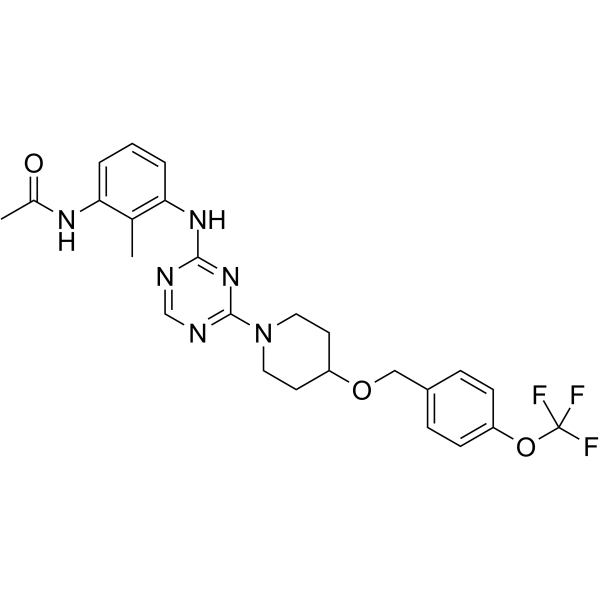
- HY-18099
-
S1RA
1 Publications Verification
E-52862
|
Sigma Receptor
5-HT Receptor
|
Neurological Disease
|
|
S1RA (E-52862) is a highly selective σ1 receptor (σ1R) antagonist with Kis of 17 nM and 23.5 nM for human σ1R and guinea pig σ1R, respectively. S1RA has Moderate antagonistic activity for human 5-HT2B receptor (Ki= 328 nM). S1RA has antinociceptive effects in neuropathic pain models. S1RA prevents mechanical and cold hypersensitivity in Oxaliplatin (HY-17371)-treated mice .
|
-
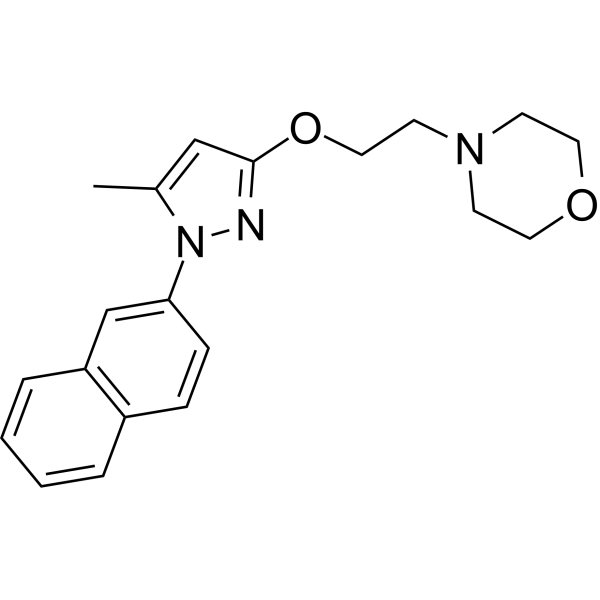
- HY-149335
-
|
|
Sigma Receptor
Histamine Receptor
|
Neurological Disease
|
|
Sigma-1 receptor antagonist 5 (compound 12),a 4-pyridylpiperidine derivative with analgesic activity,is an antagonist of sigma receptor (Ki=4.5 nM (σ1R),10 nM (σ2R)) and histamine H3 (hH3R,Ki=7.7 nM,IC50=215 nM). Sigma-1 receptor antagonist 5 suppresses Capsaicin-induced nociception with antinociceptive activity and shows potent efficacy in nociceptive and neuropathic pain models .
|
-
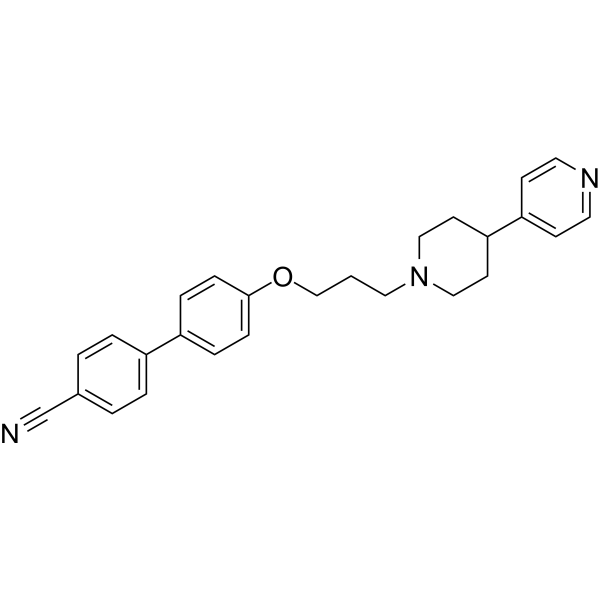
- HY-136278
-
|
Diethylamine NONOate; NOC-18
|
NO Synthase
|
Cardiovascular Disease
|
|
DETA NONOate (NOC 18) is an exogenous nitric oxide (NO) donor. DETA NONOate shows a slow release normal amounts of NO and long-acting .
|
-
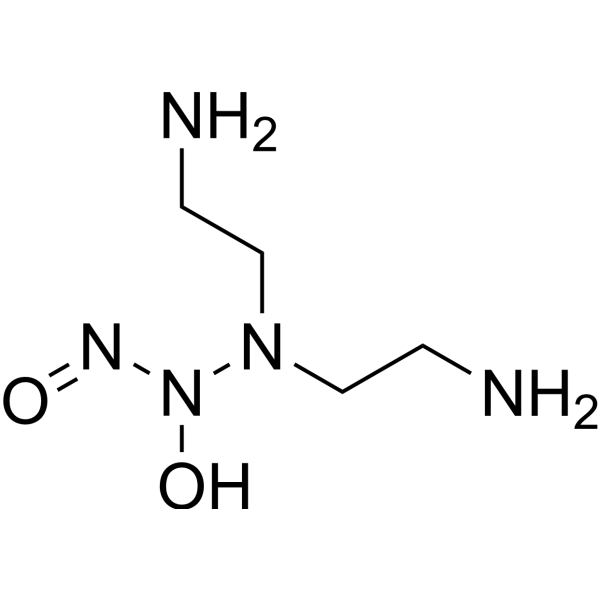
| Cat. No. |
Product Name |
Target |
Research Area |
-
- HY-P5900
-
|
m3-HwTx-IV
|
Sodium Channel
|
Neurological Disease
|
|
m3-Huwentoxin IV (m3-HwTx-IV) is a potent NaV inhibitor with IC50s of 3.3, 6.8, 7.2, 8.4, 11.9 and 369 nM against hNaV1.7, hNaV1.6, hNaV1.3, hNaV1.1, hNaV1.2 and hNaV1.4, respectively in QPatch assay. m3-Huwentoxin IV dose-dependently suppresses spontaneous pain induced by the NaV1.7 activator OD1 in a rodent pain model .
|
-
- HY-P5802
-
|
|
Calcium Channel
|
Neurological Disease
|
|
ω-Conotoxin FVIA is an N-type Ca 2+channel (Ca v 2.2)
inhibitor. ω-Conotoxin FVIA reduces mechanical and thermal pain abnormalities
in a rat model of caudal nerve injury. ω-Conotoxin FVIA can be used in the
study of highly effective pain relievers with low side effects
.
|
-
- HY-P5874
-
|
|
Calcium Channel
|
Inflammation/Immunology
|
|
Myr-TAT-CBD3 is CRMP2-CaV2.2 interaction inhibitor. Myr-tat-CBD3 can significantly attenuate carrageenan-induced thermal hypersensitivity and reverse thermal hypersensitivity induced in a rat model of postoperative pain. Myr-TAT-CBD3 can be used to study inflammation and postoperative pain .
|
-
- HY-P1330
-
|
|
P2X Receptor
|
Inflammation/Immunology
|
|
Purotoxin 1 is a P2X3 receptor inhibitor. Purotoxin 1 shows antinociceptive properties in animal models of inflammatory pain. Purotoxin 1 can be isolated from the venom of the wolf spider Geolycosa sp .
|
-
- HY-P5848
-
|
|
nAChR
|
Neurological Disease
|
|
αO-Conotoxin GeXIVA is a potent α9α10 nAChR antagonist with an IC50 of 12 nM against rat α9α10. αO-Conotoxin GeXIVA shows analgesic in animal models of pain .
|
-
- HY-P5907
-
|
|
Opioid Receptor
|
Neurological Disease
|
|
Helianorphin-19 is a potent and selective κ-opioid receptor (KOR) activator with a Ki of 21 nM and an EC50 of 45 nM. Helianorphin-19 exhibits strong KOR-specific peripheral analgesic activity in a mouse model of chronic visceral pain .
|
-
- HY-P1091
-
|
|
Cannabinoid Receptor
|
Neurological Disease
|
|
Hemopressin is a nonapeptide derived from the α1-chain of hemoglobin, is originally isolated from rat brain homogenates. Hemopressin is orally active, selective and inverse agonist of CB1 cannabinoid receptors. Hemopressin exerts antinociceptive action in inflammatory pain models .
|
-
- HY-P1090
-
|
|
Cannabinoid Receptor
|
Neurological Disease
|
|
Hemopressin(rat) is a nonapeptide derived from the α1-chain of hemoglobin, is originally isolated from rat brain homogenates. Hemopressin(rat) is orally active, selective and inverse agonist of CB1 cannabinoid receptors. Hemopressin(rat) exerts antinociceptive action in inflammatory pain models .
|
-
- HY-P1091A
-
|
|
Cannabinoid Receptor
|
Neurological Disease
|
|
Hemopressin TFA is a nonapeptide derived from the α1-chain of hemoglobin, is originally isolated from rat brain homogenates. Hemopressin TFA is orally active, selective and inverse agonist of CB1 cannabinoid receptors. Hemopressin TFA exerts antinociceptive action in inflammatory pain models .
|
-
- HY-P3223
-
|
|
Opioid Receptor
|
Neurological Disease
|
|
Biphalin TFA, a BBB-penetrable opioid peptide analog, contains two active enkephalin pharmacophores. Biphalin TFA has high affinity for opioid receptors. Biphalin TFA shows analgesic effect in acute, neuropathic, and chronic animal pain models. Biphalin TFA is also an antiviral, antiproliferative, anti-inflammatory, and neuroprotective agent .
|
-
- HY-P1090A
-
|
|
Cannabinoid Receptor
|
Neurological Disease
|
|
Hemopressin(rat) TFA is a nonapeptide derived from the α1-chain of hemoglobin, is originally isolated from rat brain homogenates. Hemopressin(rat) TFA is orally active, selective and inverse agonist of CB1 cannabinoid receptors. Hemopressin(rat) TFA exerts antinociceptive action in inflammatory pain models .
|
-
- HY-P1220
-
|
|
Sodium Channel
|
Neurological Disease
|
|
Huwentoxin-IV is a potent and selective sodium channel blocker, inhibits neuronal Nav1.7, Nav1.2, Nav1.3 and Nav1.4 with IC50s of 26, 150, 338 and 400 nM, respectively. Huwentoxin-IV preferentially blocks peripheral nerve subtype Nav1.7 by binding neurotoxin receptor site 4. Huwentoxin-IV has analgesic effects on animal models of inflammatory and neuropathic pain .
|
-
- HY-P1220A
-
|
|
Sodium Channel
|
Neurological Disease
|
|
Huwentoxin-IV TFA is a potent and selective sodium channel blocker, inhibits neuronal Nav1.7, Nav1.2, Nav1.3 and Nav1.4 with IC50s of 26, 150, 338 and 400 nM, respectively. Huwentoxin-IV TFA preferentially blocks peripheral nerve subtype Nav1.7 by binding neurotoxin receptor site 4. Huwentoxin-IV TFA has analgesic effects on animal models of inflammatory and neuropathic pain .
|
| Cat. No. |
Product Name |
Category |
Target |
Chemical Structure |
Your information is safe with us. * Required Fields.
Inquiry Information
- Product Name:
- Cat. No.:
- Quantity:
- MCE Japan Authorized Agent:









































































